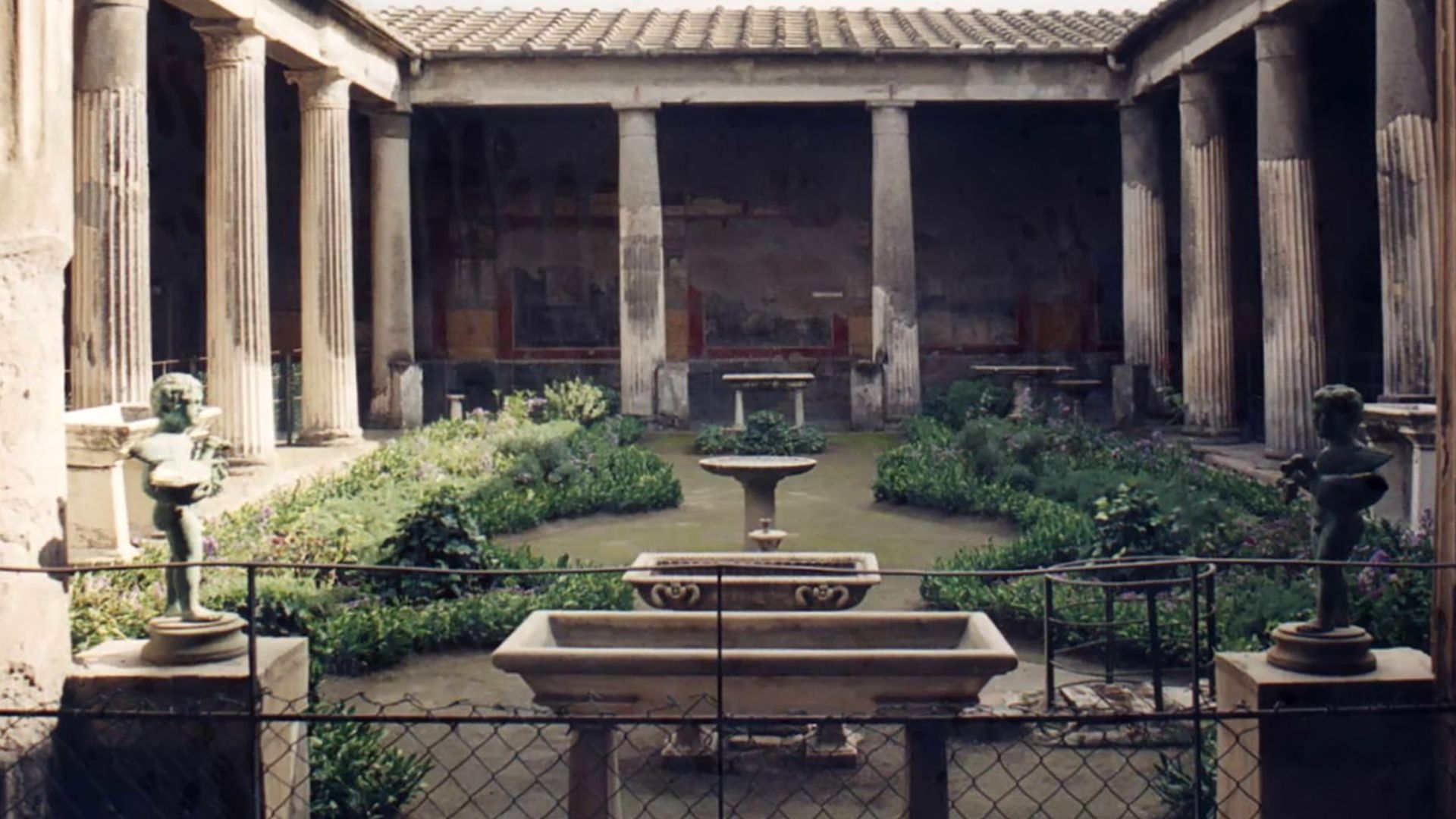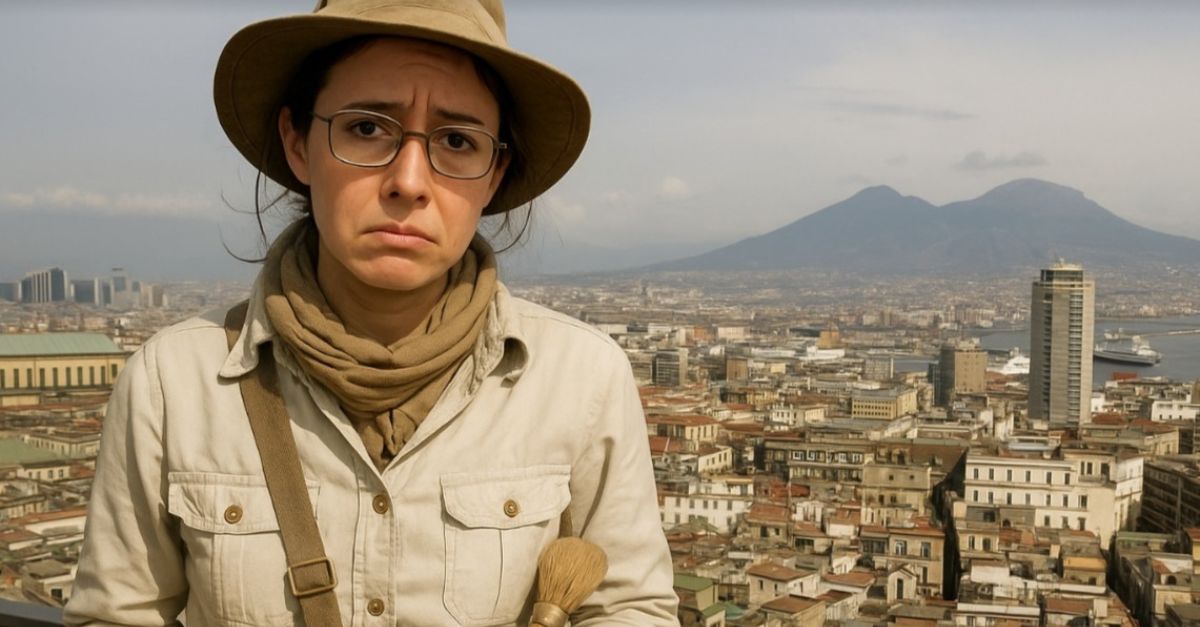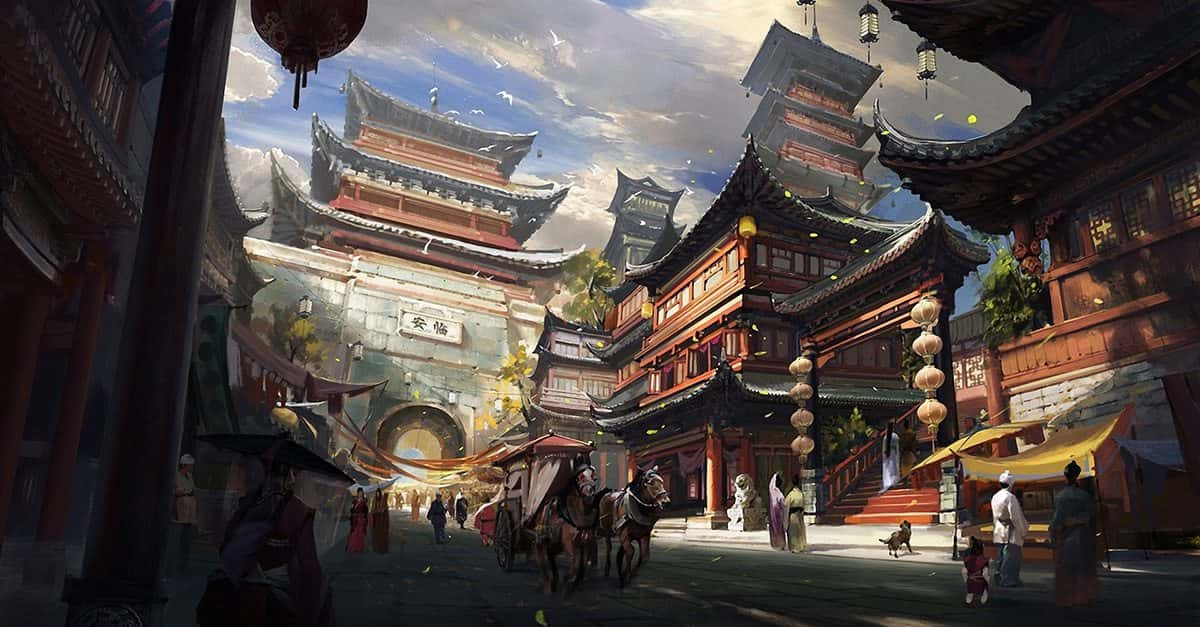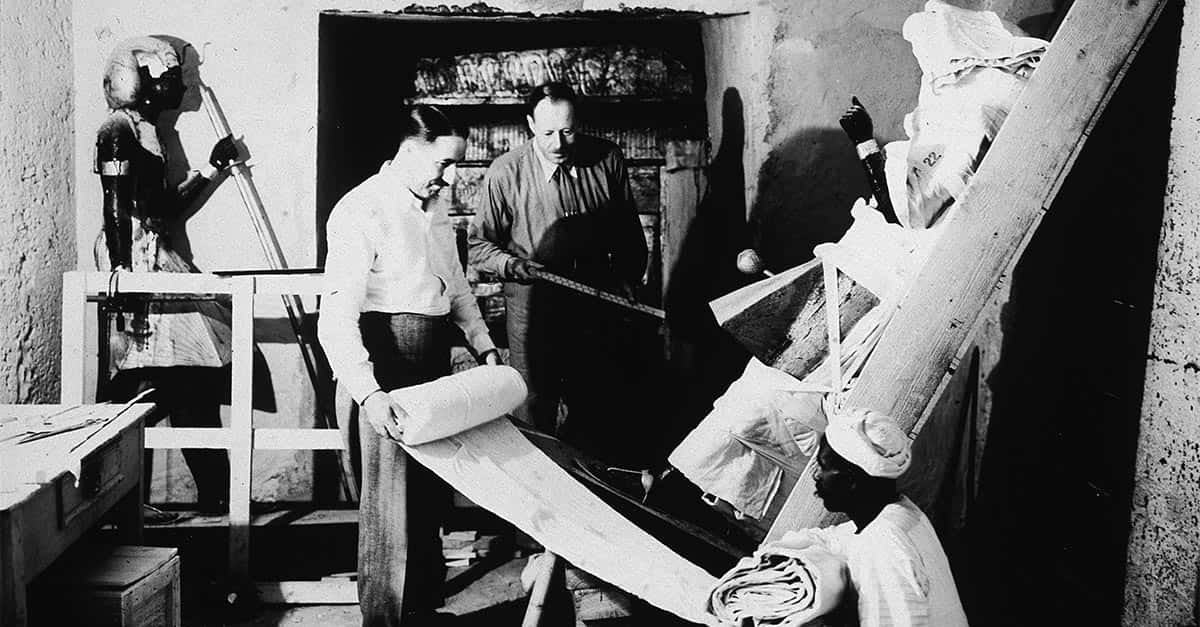Volcanic Nightmare
Vesuvius buried an entire civilization, then gave us back their stories piece by piece. The latest discovery reveals how one wealthy family faced their final moments together.

Ancient Volcanic Birth
Mount Vesuvius formed approximately 25,000 years ago through the dramatic tectonic collision between the African and Eurasian plates. This geological process created a dangerous stratovolcano just 9 kilometers east of modern Naples. The mountain would become one of history's most destructive volcanic peaks.
Bronze Age Catastrophe
Around 1800 BC, the Avellino eruption completely devastated Bronze Age settlements across the region. The disaster destroyed communities of the Apennine culture, including the ancient city of Afragola. Modern archaeologists have discovered preserved human footprints, wooden fence rails, and household buckets buried near Nola.
 Pierpaolo Petrone, Wikimedia Commons
Pierpaolo Petrone, Wikimedia Commons
Oscan Village Foundation
The Oscans established the first permanent settlements on Pompeii's future site during the 8th century BC. This central Italian population founded five distinct villages in the fertile volcanic soil. These early communities would provide the foundation for a significant urban center that would flourish for centuries.
 Dave & Margie Hill / Kleerup from Centennial, CO, USA, Wikimedia Commons
Dave & Margie Hill / Kleerup from Centennial, CO, USA, Wikimedia Commons
Greek Cultural Revolution
Greek colonists arrived in Campania around 740 BC, completely changing local culture. They constructed the magnificent Doric Temple in what became the Triangular Forum. The Greeks also introduced Apollo worship and Hellenic architectural styles. Their influence permanently shaped Pompeii's religious and cultural identity.
 Mentnafunangann, Wikimedia Commons
Mentnafunangann, Wikimedia Commons
Etruscan Administrative Period
By 524 BC, Etruscan settlers gained control of the region while respecting local customs and traditions. They built a primitive forum and expanded the existing Temple of Apollo. The Etruscans started introducing Tuscan-style atrium houses, which became defining features of regional domestic design.
Samnite Military Domination
The entire area was then conquered between 423 and 420 BC by the powerful Samnites through military force. They systematically enlarged the town and imposed their architectural styles throughout the community. Despite foreign rule, Pompeii remained loyal to Rome during subsequent conflicts, including wars against Pyrrhus.
 Unknown author, Wikimedia Commons
Unknown author, Wikimedia Commons
Roman Colonial Establishment
When Pompeii became Colonia Cornelia Veneria Pompeianorum under Sulla's military command, the Social Wars finally concluded. Roman veterans received substantial land grants while many original residents lost their properties. This transition fundamentally enhanced the town’s social structure and political allegiances.
 Unknown author, Wikimedia Commons
Unknown author, Wikimedia Commons
Augustan Urban Renaissance
Emperor Augustus initiated urban development projects starting around 30 BC. Major construction included the impressive Eumachia Building and the sacred Sanctuary of Augustus. Besides, the Serino Aqueduct system brought fresh running water throughout the expanding town, supporting unprecedented population growth.
 Till Niermann, Wikimedia Commons
Till Niermann, Wikimedia Commons
Earthquake Precursor
On February 5, 62 CE, a catastrophic earthquake measuring 5–6 on the Richter scale occurred. The disaster caused extensive structural damage throughout the Bay of Naples region, particularly to Pompeii's buildings and infrastructure. This seismic event served as an ominous geological warning sign.
 The Library of Congress from Washington, DC, United States, Wikimedia Commons
The Library of Congress from Washington, DC, United States, Wikimedia Commons
Reconstruction And Renewal
Well, the seventeen-year period between 62 and 79 CE then witnessed extensive rebuilding efforts. Private homeowners covered earthquake-damaged frescoes with beautiful new artwork. Additionally, public buildings were adorned with elegant marble veneers and architectural enhancements, underscoring the community's remarkable resilience and continued prosperity.
Peak Population Prosperity
By 79 CE, Pompeii had reached its demographic zenith with approximately 20,000 residents. The city prospered from its exceptional agricultural fertility in the volcanic soil. Its strategic Mediterranean location also made it a critical commercial hub as wealthy citizens enjoyed luxurious lifestyles supported by thriving trade networks.
Fatal October Morning
Mount Vesuvius began its catastrophic eruption sequence once again on October 24, 79 CE. The initial phase produced torrential pumice rain lasting eighteen hours. This extended timeframe allowed most Pompeii inhabitants to gather their belongings and escape. However, those who remained faced certain death.
 John Martin, Wikimedia Commons
John Martin, Wikimedia Commons
Pyroclastic Destruction
During the night or early morning of the second day, lethal pyroclastic flows began emerging from the volcano. These high-speed, dense clouds of scorching ash moved with great force. They knocked down buildings and suffocated remaining residents. The flows permanently altered the regional coastline.
 Giorgio Sommer, Wikimedia Commons
Giorgio Sommer, Wikimedia Commons
Herculaneum's Escape
Unlike Pompeii, Herculaneum was initially spared from the tephra falls during the first phase of the eruption. Favorable wind patterns had carried the volcanic debris southeast toward Pompeii. Herculaneum's western location relative to Vesuvius provided temporary protection from the ash rain.
 Rutger van der Maar, Wikimedia Commons
Rutger van der Maar, Wikimedia Commons
Deeper Burial
As predicted, this reprieve proved tragically short-term when pyroclastic surges overwhelmed the town in later phases. These gas, ash, and volcanic rock superheated flows buried Herculaneum under approximately 23–25 meters of material. The huge deposits made Herculaneum much more difficult to excavate.
Pliny's Historical Documentation
Pliny the Younger provided the only surviving detailed eyewitness account of the disaster. He observed the terrifying events from Misenum across the Bay of Naples. His comprehensive letters to historian Tacitus described the two-day catastrophe, which became invaluable historical records for understanding ancient volcanic disasters.
 Angelica Kauffmann, Wikimedia Commons
Angelica Kauffmann, Wikimedia Commons
Naval Commander's Sacrifice
It was then Pliny the Elder who commanded the Roman fleet stationed at Misenum during the crisis. He courageously launched rescue operations to save stranded civilians near the volcano. Unfortunately, the elderly admiral is said to have died from a heart attack during the mission.
 Wolfgang Sauber, Wikimedia Commons
Wolfgang Sauber, Wikimedia Commons
Complete Urban Preservation
The explosion pushed Pompeii under 4-6 meters of volcanic ash and pumice debris, creating extraordinary preservation conditions for organic materials. The volcanic material acted like a natural time capsule, freezing buildings, artifacts, and human remains at the exact moment of destruction.
Immediate Treasure Hunting
Shortly after this incident, survivors and opportunistic thieves returned to salvage valuable materials. They systematically removed marble statues from the Forum and precious items from houses. Archaeological evidence includes wall graffiti reading "house dug" and holes punched through building walls.
 Unknown author, Wikimedia Commons
Unknown author, Wikimedia Commons
Medieval Memory Loss
Pompeii slowly disappeared from human memory. People forgot its name and exact location completely. Then, more volcanic eruptions hit in 471–473 and 512 CE, burying everything even deeper under fresh ash. By this time, local farmers started calling the mysterious area “La Civita”.
Renaissance Accidental Discovery
In 1592, architect Domenico Fontana accidentally encountered ancient painted walls while constructing an underground aqueduct. His waterway project passed directly through major sections of the concealed city. However, Fontana hid this intriguing archaeological discovery, albeit unintentionally, for over a century.
 Federico Zuccari, Wikimedia Commons
Federico Zuccari, Wikimedia Commons
Herculaneum's Royal Excavation
Workers digging foundations for King Charles of Bourbon's summer palace officially rediscovered Herculaneum in 1738. The spectacular quality of preserved artifacts immediately captured royal attention, inspiring systematic archaeological interest in the region. Charles maintained personal involvement even after becoming King of Spain.
 Diego Delso, Wikimedia Commons
Diego Delso, Wikimedia Commons
Pompeii's Scientific Awakening
A decade later, in 1748, Spanish military engineer Roque Joaquin de Alcubierre began thorough excavations at Pompeii. King Charles of Bourbon enthusiastically patronized these efforts. The city's identity remained mysterious until researchers spotted an important inscription that identified the city as Pompeii.
 Taken by the uploader, Patricio Lorente, Wikimedia Commons
Taken by the uploader, Patricio Lorente, Wikimedia Commons
Pompeii's Scientific Awakening (Cont.)
This was the inscription “Rei publicae Pompeianorum,” meaning “of the state of the Pompeians”. The Latin phrase was found on a stone in 1763. Such inscriptions were critical for legal and administrative purposes, often related to the regulation of public lands and civic spaces.
 File Upload Bot (Eloquence), Wikimedia Commons
File Upload Bot (Eloquence), Wikimedia Commons
Methodical Documentation
Well, Karl Weber stood as the first truly scientific excavator, directing meticulous operations from 1750 to 1764. His innovative approach emphasized careful documentation over treasure hunting. Military engineers Francisco and Pietro la Vega continued Weber's methodical traditions as their work established foundational principles for modern excavation practices.
 Pietro Fabris, Wikimedia Commons
Pietro Fabris, Wikimedia Commons
French Imperial Expansion
When French forces occupied Naples in 1799, paleontological work gained unprecedented momentum and resources. Between 1806 and 1815, up to 700 workers labored simultaneously across the excavation sites. They successfully connected previously isolated northern and southern excavated areas. The ambitious Via dell'Abbondanza exposure revealed Pompeii's fantastic urban planning.
 Lord Pheasant at English Wikipedia, Wikimedia Commons
Lord Pheasant at English Wikipedia, Wikimedia Commons
Fiorelli's Innovation
When he assumed control of Pompeii in 1863, Giuseppe Fiorelli revolutionized archaeology. He brilliantly divided the sprawling site into nine manageable regions with numbered blocks. His ingenious plaster casting technique recreated decomposed human forms with startling accuracy, while capturing victims' final moments.
 Marcus Cyron, Wikimedia Commons
Marcus Cyron, Wikimedia Commons
Twentieth Century Renaissance
After WWII disruptions, Amedeo Maiuri resumed intensive excavation campaigns from 1924 to 1961. His teams uncovered vast areas south of Via dell'Abbondanza in Regions I and II. Unfortunately, scientific proof remained inadequate due to evolving professional standards. However, these efforts revealed the incredible scope and complexity of Pompeii.
 Federico Patellani, Wikimedia Commons
Federico Patellani, Wikimedia Commons
1990s Preservation Crisis
By the end of the 20th century, archaeologists had uncovered roughly 66% of Pompeii’s total area. This exposed hundreds of buildings, streets, and countless artifacts to the open air for the first time in nearly two millennia. Many establishments that had survived centuries underground began to deteriorate rapidly.
Twenty-First Century Findings
Since 2018, renewed excavation efforts in previously unexplored areas have yielded extraordinary discoveries. These recent investigations focus on targeted areas rather than massive site-wide excavations. Undoubtedly, the Casa di Elle e Frisso represents one of the most significant recent finds.
Casa Di Elle E Frisso Identification
The newly excavated house earned its distinctive name from a stunning fresco in the triclinium. This artwork depicts the ancient mythological tale of Helle and Phrixus with notable artistic skill. Researchers first documented and studied this masterpiece during comprehensive 2018 excavation campaigns.
 Pompei - Regio V Insula 6 - Casa di Elle e Frisso by graziano tavan
Pompei - Regio V Insula 6 - Casa di Elle e Frisso by graziano tavan
Family's Desperate Final Stand
Inside this elegantly decorated home, heartbreaking evidence of a family's last moments has been uncovered. As volcanic death approached, the residents had desperately wedged their bed against the room's entrance. This makeshift barricade mirrors their final attempt to survive the catastrophic eruption.
 Una passeggiata alla casa di Elle e Frisso by ClassiCult
Una passeggiata alla casa di Elle e Frisso by ClassiCult
Volcanic Invasion Process
The family's terror escalated as volcanic lapilli rocks cascaded relentlessly through gaps in their damaged atrium roof. These projectiles forced them to abandon their main living spaces immediately. They retreated to their smallest room for safety, but Mount Vesuvius showed no mercy to those who remained behind.
 James St. John, Wikimedia Commons
James St. John, Wikimedia Commons
Archaeological Director's Documentation
Gabriel Zuchtriegel, the director of Pompeii Archaeological Park, described the poignant discovery to ANSA. He said, “In this small, wonderfully decorated house, we found traces of residents who tried saving themselves, blocking the entrance with a bed”.
Four Family Members
Excavators found four human remains. Among these was a child whose fragile skeleton spoke to the vulnerability of the youngest victims. The group’s final postures—some clutching each other, others pressed against the walls—paint a sad but vivid picture of panic and terror.
 Jules Verne Times Two, Wikimedia Commons
Jules Verne Times Two, Wikimedia Commons
Child's Sacred Protection Amulet
Additionally, a bronze bulla was found between the remains of a child victim, strongly suggesting it belonged to the young individual. A bulla was a small, rounded locket or amulet worn around the neck, traditionally given to Roman boys shortly after birth.
 Jamie Heath, Wikimedia Commons
Jamie Heath, Wikimedia Commons
Advanced Preservation Techniques
Archaeologists employed advanced plaster casting techniques to carefully capture every haunting detail of the victims' final positions and their immediate surroundings. Italian archaeologist Giuseppe Fiorelli pioneered this method in the 19th century. The casts revealed the distinctive shape of the bed.
 Tommaso Solari, Wikimedia Commons
Tommaso Solari, Wikimedia Commons
Elegant House Architecture
Casa di Elle e Frisso features an elegant atrium with an impluvium water basin, a richly decorated triclinium banquet hall adorned with vivid frescoes and intricate stucco work, as well as private bedrooms. All of this showcased the family's considerable wealth and high social status in Roman society.
 Norbert Nagel, Wikimedia Commons
Norbert Nagel, Wikimedia Commons
Daily Life Objects Preserved
Beyond the human remains, excavators also uncovered fascinating everyday objects. These included amphorae containers specifically used for storing garum, fermented fish sauce, and elegant bronze tableware. A ladle, a one-handled jug, a basket-shaped vase, and a shell-shaped cup were also found.
Renovation Work Evidence
Detailed evidence strongly indicates that the Casa di Elle e Frisso family was amid renovations when Mount Vesuvius erupted. Several signs of ongoing construction work were seen, such as removed thresholds, unfinished decorative elements, and cut sections of masonry near the entrance.
 Pompei - Regio V Insula 6 - Casa di Elle e Frisso by graziano tavan
Pompei - Regio V Insula 6 - Casa di Elle e Frisso by graziano tavan
Extreme Temperature Measurements
The eruption unleashed multiple pyroclastic flows like fast-moving surges of searing hot gases and volcanic debris that swept through Pompeii. These flows caused temperatures inside homes to soar to between 356 and 680 degrees Fahrenheit (180–360°C), and in some instances even higher.
 C.G. Newhall, Wikimedia Commons
C.G. Newhall, Wikimedia Commons
Scientific Study Publication
Such comprehensive studies were published in The Journal of the Geological Society and the E-Journal of the Pompeii Excavations. Zuchtriegel even reflected on the profound emotional impact, stating: “Excavating and visiting Pompeii means confronting the beauty of art but also the precariousness of all our lives”.
Modern Conservation Concerns
Today, Pompeii faces significant threats from weathering, erosion, tourism damage, and structural decay. In June 2013, UNESCO issued a stern warning that if substantial progress was not made in restoration within two years, Pompeii could be placed on the List of World Heritage in Danger.
Major Initiatives
In response, major initiatives like the "Grande Progetto Pompei" were launched to stabilize and conserve the most at-risk buildings. Simultaneously, new management plans were introduced to integrate conservation and maintenance programs better. In recent years, there has also been a shift toward promoting sustainable, quality-driven tourism.





















